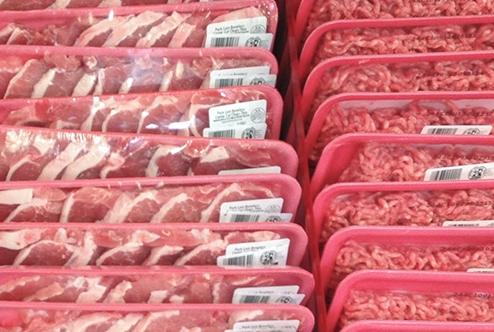
Reprinted by permission of McGill University Office for Science and Society.
###
It's a different world today, especially if you shop for your meat at a supermarket. You select your cut, pre-packaged meat from the refrigerated case, and the butcher who prepared it may not even be at that location. This is “centrally processed, case-ready meat” referred in the industry as CPRM. The central processing facility may be miles away from the supermarket. Of course, there is an economic consideration to central processing but it also helps deliver a safe, consistent, high-quality product with longer shelf life. And there is a lot of science involved here.
First, oxygen is both a friend and enemy of cut meat. Freshly sliced meat is a purplish colour due to a naturally occurring pigment called myoglobin. But as soon as myoglobin is exposed to the air, it reacts with oxygen to form bright red oxymyoglobin, the colour we associate with fresh meat. That’s the colour that sells! But it doesn’t last very long. Further exposure to oxygen converts the red oxymyoglobin to brownish metmyoglobin, which has far less consumer appeal, even though it is not indicative of spoilage. However, more continuous oxygen exposure does cause problems as fats in the meat react with oxygen and produce a variety of rancid flavours. Oxygen also facilitates the growth of some bacteria and moulds. The challenge then is to provide the consumer with packaged meat that has an attractive red colour, is free of microbes and rancidity and has a reasonably long shelf life. And of course, this has to be done at an affordable cost.
Centrally processed case-ready meat uses some interesting technology. At the packing plant meat is sliced and placed on individual foamed polystyrene trays. Often a thin sachet filled with sodium bicarbonate and sodium polyacrylate is placed under the meat. The bicarbonate releases carbon dioxide on reaction with moisture and the carbon dioxide acts as a preservative. The polyacrylate powder absorbs excess moisture that may seep out from the meat. Low-density polyethylene or polyvinyl chloride film is used to wrap the trays. These protect against contamination by dirt, microbes and insects but they do allow oxygen to pass through, which later on comes in handy.
The trays are then placed inside a larger “mother bag” which is then flushed with a mixture of carbon dioxide and nitrogen to drive out any air. This bag is made of multi-layered plastic film, usually a polyamide and a polyester and is totally impervious to oxygen. Packets of very finely powdered iron that reacts with oxygen to form iron oxide are placed inside the mother bag to remove the last traces of oxygen. This is great for extending shelf life, but not for colour. However, at this stage, it doesn’t matter if the meat isn’t bright red. When the shipment arrives at the store, the mother bag is opened and the trays are placed in the refrigerated case. Since the plastic wrap around the individual trays is permeable to oxygen from the air, the dark colour of myoglobin converts to the cherry red of oxymyoglobin. While the wrap is permeable to oxygen, it locks in moisture so the nice red meat doesn’t dry out. Cash registers start ringing!
The original McGill University OSS post can be found here.


